Top 11 altcoins to mine at the end of 2023
- August 08, 2023
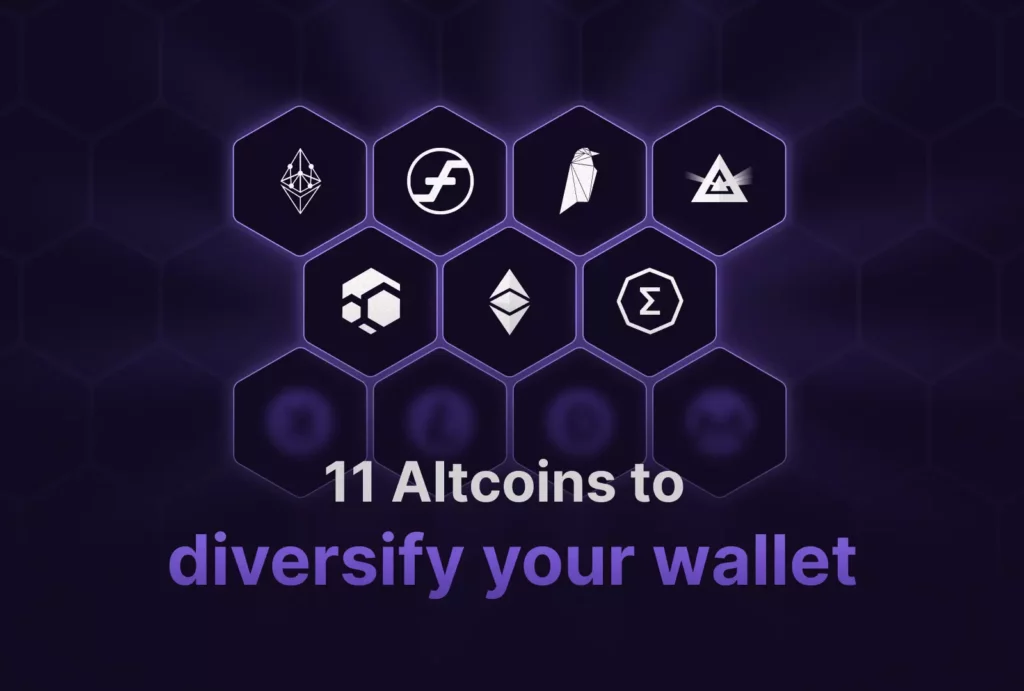

Introduction
Cryptocurrency mining has become an increasingly popular method for individuals to participate in the blockchain revolution actively. While Bitcoin remains the most well-known digital currency, the world of cryptocurrencies has expanded significantly, with thousands of alternative coins, or “altcoins” now available. Altcoins represent a diverse range of blockchain projects, each offering unique features, benefits, and potential for miners seeking to diversify their cryptocurrency portfolios.
What are Altcoins?
Altcoins, a blend of “alternative” and “coins,” are a diverse group of digital currencies that have emerged as alternatives to Bitcoin. While Bitcoin was the first and most well-known cryptocurrency, it paved the way for the development of numerous altcoins, each with its unique characteristics and goals.
These alternative cryptocurrencies utilize blockchain technology, much like Bitcoin, to enable secure and decentralized transactions. However, they often differ in terms of underlying protocols, consensus mechanisms, and specific use cases. One of the primary motivations behind the creation of altcoins is to address perceived limitations or explore new functionalities not present in Bitcoin. Some altcoins have focused on enhancing transaction speed and scalability. Bitcoin’s block time and block size limitations have resulted in a limited number of transactions per second, leading to slower confirmation times during periods of high network activity. In response, some altcoins have implemented different consensus algorithms or adjusted block parameters to achieve faster transaction speeds and increased scalability.
Privacy is another crucial aspect that has driven the development of certain altcoins. While Bitcoin offers a certain level of pseudonymity, it is not entirely private. As a result, privacy-focused altcoins have emerged, aiming to provide enhanced anonymity for users and their transactions through advanced cryptographic techniques.
Additionally, the rise of smart contracts has been a significant development in the cryptocurrency space, and several altcoins have sought to capitalize on this. Smart contract platforms like Ethereum allow developers to create decentralized applications (dApps) and execute self-executing contracts with predefined conditions. These platforms have opened up new possibilities for decentralized finance (DeFi), non-fungible tokens (NFTs), and more.
Advantages of Altcoins
Altcoins provide numerous benefits for crypto miners, making them an attractive option in the ever-evolving cryptocurrency landscape. One of the primary advantages is diversification. By mining altcoins in 2023 in addition to the well-known Bitcoin, miners can spread their risks across various cryptocurrencies. This strategy helps reduce the potential impact of a downturn in a single coin’s value, safeguarding the miner’s investment.
Moreover, mining altcoins in 2023 can be more accessible for individual miners. Bitcoin mining has become highly competitive and resource-intensive, requiring specialized equipment and significant energy consumption. Some altcoins are made for easier mining, so even people with basic hardware can join in the process.. This inclusivity empowers a broader range of individuals to get involved in cryptocurrency mining, promoting decentralization within the network.
Altcoins also offer the possibility of contributing to exciting and innovative projects. Many altcoins are created to serve specific purposes or address niche markets, such as decentralized finance (DeFi), non-fungible tokens (NFTs), or energy-efficient consensus mechanisms. By supporting these projects through mining, individuals can contribute to technological advancements and the overall growth of the crypto ecosystem.
Ethereum Classic (ETC)
Ethereum Classic is a decentralized blockchain platform that originated from a contentious hard fork of the original Ethereum network in 2016. The fork occurred after a high-profile hack of a smart contract known as “The DAO” (Decentralized Autonomous Organization), where a significant amount of Ether (ETH) was stolen. Ethereum Classic’s fundamental principle is to maintain an immutable blockchain, meaning that once a transaction is recorded, it cannot be reversed or altered, even in cases of security breaches or malicious activities.
Like its parent chain, Ethereum Classic enables the execution of smart contracts, which are self-executing programs that automate complex actions based on predefined conditions. This capability has led to the creation of various decentralized applications (DApps) and decentralized financial (DeFi) services on its platform.
Some data about Ethereum Classic:
Algorithm: Etchash
Hardware: ASIC & GPU
Volume: $124.67M (08/2023)
Founded: 2016
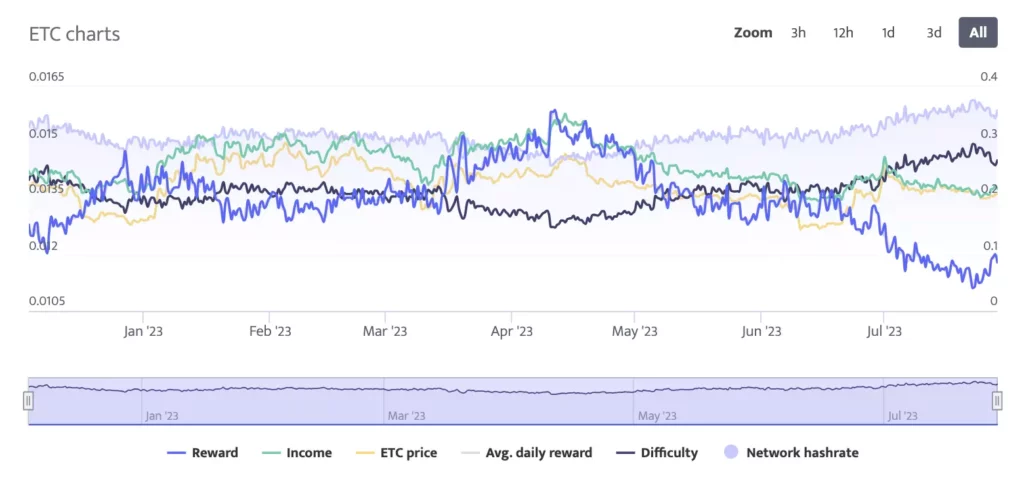
FLUX
FLUX is a cryptocurrency that powers the Flux Ecosystem, a suite of decentralized computing services and blockchain-as-a-service solutions. It offers an interoperable, decentralized, AWS-like development environment, allowing users to build and deploy their own decentralized applications (dApps). FLUX utilizes a native proof-of-work (POW) coin, which is mined by solving complex mathematical equations to add blocks to the blockchain and bring new coins into circulation.
The owners of Flux Nodes are rewarded in FLUX for providing hardware to the network, creating an incentive for hardware hosters. The coin can be staked, bought, sold, and traded, and holding FLUX allows users to run their own Flux Node and earn more coins. FLUX has its own operating system called FluxOS, based on Linux, which manages the network and dApps. The project was founded in 2018 and was initially known as ZelCash, rebranding to FLUX in March 2021.
Some data about FLUX:
Algorithm: Equihash(125,4)
Hardware: GPU
Volume: $6.12M (08/2023)
Founded: 2018

ERGO (ERG)
Ergo is a decentralized cryptocurrency and platform combining the best features of Ethereum and Bitcoin. It offers advanced smart contract capabilities for decentralized finance (DeFi) while maintaining strong security through its proof-of-work (PoW) consensus. Ergo’s unique mining algorithm, “Autolykos,” promotes energy efficiency and decentralization.
Its programmable blockchain supports various DApps without transaction fees, attracting developers. ErgoScript, its smart contract language, ensures security and simplifies coding for DeFi applications. With innovative features like ErgoRaffle and ErgoMixer, Ergo aims to provide a user-friendly, mobile-friendly, and privacy-focused decentralized financial ecosystem.
Some data about ERGO:
Algorithm: Autolykos2
Hardware: GPU
Volume: $361.87K (08/2023)
Founded: 2017
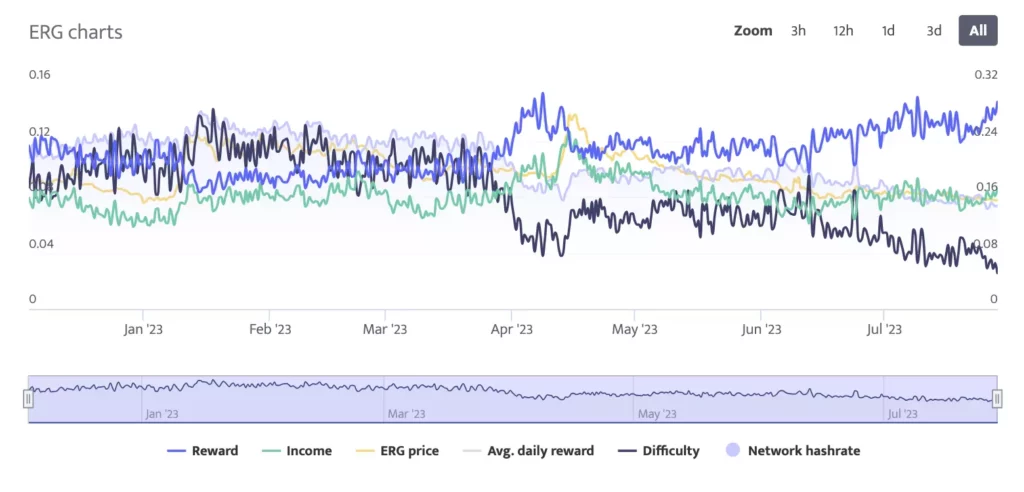
Have you heard about dual mining? Ergo is quite interesting in such mining method. You can check the tutorial made by our sponsored crypto miner Sterling Specter.
EthereumPoW (ETHW)
EthereumPoW is a hard fork of the Ethereum blockchain that emerged in opposition to Ethereum’s move to Proof-of-Stake (PoS) consensus mechanism, known as the Merge. It retains the original consensus mechanism, Proof-of-Work (PoW), where miners solve complex calculations to validate transactions and create blocks in exchange for rewards. ETHW aims to preserve the pre-Merge state of Ethereum by replicating its functions and smart contracts on an independent chain.
The project was initiated by Chandler Guo, a prominent Ethereum miner, and gained support from other miners and developers. It distributed ETHW crypto to ETH holders through a 1:1 airdrop, mirroring wallet balances. The success of ETHW relies on community and developer support, as it competes with Ethereum’s main blockchain, which is now more scalable due to PoS.
Some data about EthereumPoW:
Algorithm: Ethash
Hardware: ASIC & GPU
Volume: $3496.27K (08/2023)
Founded: 2022
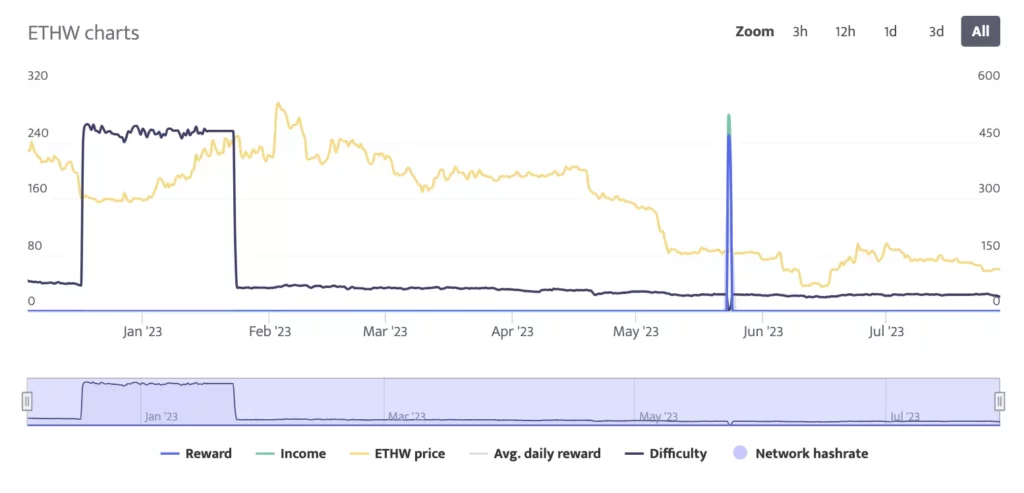
FIRO
FIRO, previously known as Zcoin, is a privacy-centric cryptocurrency designed to prioritize user anonymity and fungibility. Launched in 2016, FIRO addresses the limitations of traditional cryptocurrencies like Bitcoin, which lack full privacy and fungibility. It leverages Zero-Knowledge Proofs (ZKPs) to facilitate private transactions while ensuring data integrity on its blockchain.
The core feature of FIRO is its privacy protocol, which allows users to conduct transactions without revealing sensitive information such as transaction amounts and sender/receiver identities. By using ZKPs, FIRO provides cryptographic proof that a transaction is valid without disclosing any unnecessary details, effectively concealing the sender and receiver.
FIRO employs two privacy protocols: Sigma and Lelantus. Sigma offers users selectable privacy options, enabling them to choose between transparent or private transactions, depending on their needs. On the other hand, Lelantus enhances the privacy aspect further by providing efficient and scalable confidential transactions.
Some data about FIRO:
Algorithm: FiroPoW
Hardware: GPU
Volume: $525.74K (08/2023)
Founded: 2016
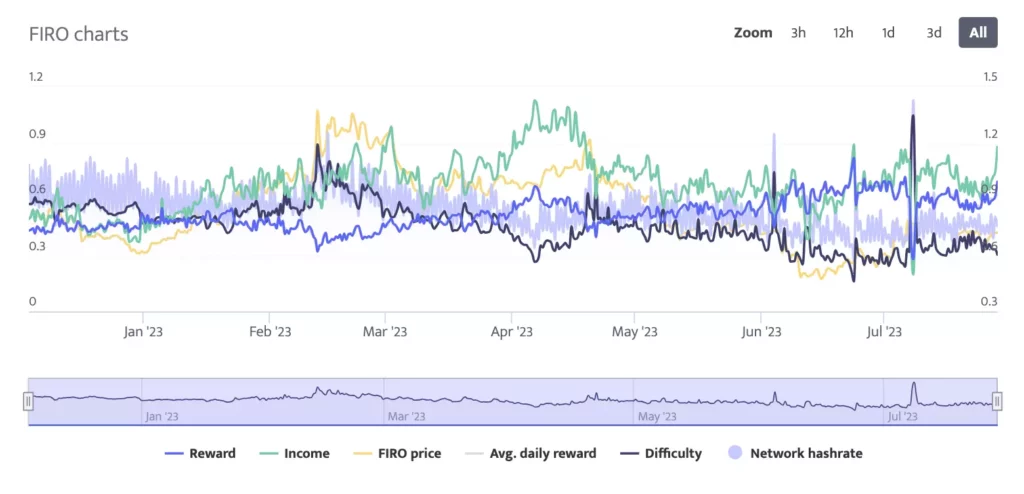
Ravencoin (RVN)
Ravencoin is an open-source, decentralized blockchain protocol launched in 2018 as a fork of the Bitcoin code. It aims to optimize the transfer of crypto assets from one party to another and focuses on creating a use case-focused blockchain. The native cryptocurrency of the Ravencoin ecosystem is RVN, with a maximum supply of 21 billion coins, in contrast to Bitcoin’s 21 million. The issuance schedule includes a block reward of 5,000 RVN, a block time of one minute, and a mining algorithm to prevent mining centralization.
Ravencoin’s unique features include the ability to issue assets representing real-world and virtual assets on its blockchain. To issue assets, RVN coins must be burned, making them an essential part of the protocol. The project was co-founded by Bruce Fenton, Tron Black, and Joel Weight, experienced businessmen and developers.
The Ravencoin blockchain uses a variation of Proof-of-Work (PoW) called KAWPOW to secure its network, allowing for a lower barrier to entry in mining.
Some data about Ravencoin:
Algorithm: KAWPOW
Hardware: GPU
Volume: $4823.00K (08/2023)
Founded: 2018

BEAM
Beam is a distinctive privacy-focused cryptocurrency in the crypto world, renowned for its innovative utilization of the Mimblewimble privacy technology. This coin was introduced in 2018 and was the first to implement the Mimblewimble protocol.
Mimblewimble is a unique blockchain design that leverages the Proof-of-Work consensus mechanism to significantly enhance privacy and scalability. It introduces a novel transaction model that is more compact, faster to download, synchronize, and verify. One of its key features is Cut-Through, which efficiently eliminates redundant transaction records, ensuring a more streamlined and private blockchain.
Beam’s privacy features are highly impressive due to its lack of identifiable or reusable addresses. While participants have access to detailed transaction information, outsiders only see random data, ensuring a high level of confidentiality. The blockchain’s blocks resemble a single large transaction rather than a collection of smaller ones, and reputable outputs cannot be traced back to their inputs.
Some data about BEAM:
Algorithm: BeamHashIII
Hardware: GPU
Volume: $152.99K (08/2023)
Founded: 2018
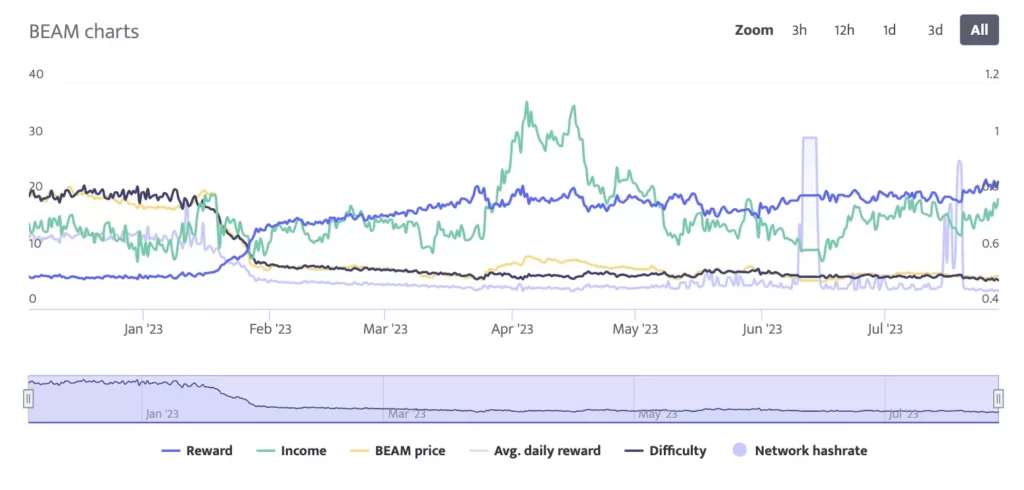
KASPA (KAS)
Kaspa is a decentralized, open-source, and scalable Layer-1 blockchain solution founded by Yonatan Somplinsky. It utilizes the GHOSTDAG protocol, which is a proof-of-work consensus mechanism that allows blocks created in parallel to coexist and be ordered in consensus, eliminating block orphaning. This approach enables Kaspa to achieve high block rates while maintaining the security guarantees of Bitcoin.
Kaspa is designed to be a scalable generalization of the Nakamoto Consensus, faithful to the principles embedded in Bitcoin. KAS serves as the native currency of the project, used for all on-chain transactions and mining rewards distribution. Kaspa positions itself as the fastest and most scalable instant confirmation transaction layer ever built on a proof-of-work engine. It was fairly launched, and the project is governed and funded by its community.
Some data about KASPA:
Algorithm: KHeavyHash
Hardware: GPU
Volume: $38.18M (08/2023)
Founded: 2021
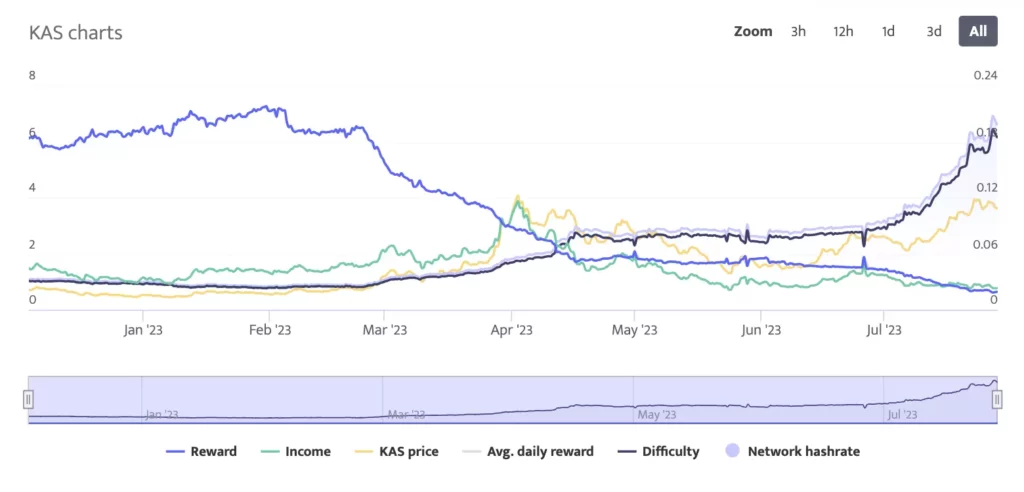
Litecoin (LTC)
Litecoin, often referred to as the “silver to Bitcoin’s gold,” is one of the earliest and most well-established cryptocurrencies. Created by Charlie Lee in 2013, Litecoin is a fork of the Bitcoin codebase with some modifications to improve transaction speed and reduce fees.
Litecoin utilizes a scrypt-based proof-of-work (PoW) algorithm, which allows for faster block generation compared to Bitcoin’s SHA-256 algorithm. This results in shorter confirmation times and lower transaction fees, making Litecoin a popular choice for everyday transactions.
While Litecoin shares similarities with Bitcoin, it has a larger total supply of coins (84 million compared to Bitcoin’s 21 million), making it more abundant. Litecoin’s early adoption and widespread acceptance have contributed to its reputation as one of the leading cryptocurrencies.
Some data about Litecoin:
Algorithm: Scrypt
Hardware: ASIC
Volume: $807.53M (08/2023)
Founded: 2013
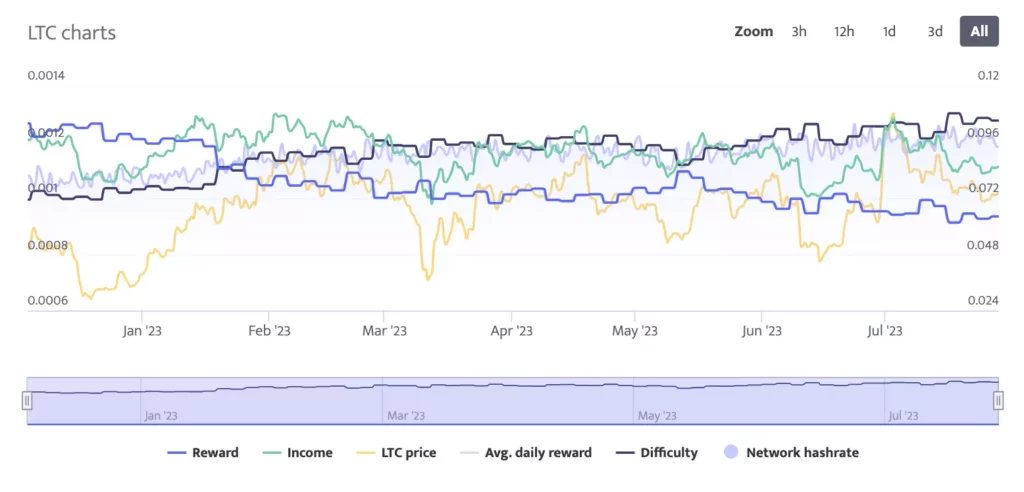
Dogecoin (DOGE)
Originally created as a lighthearted meme cryptocurrency in 2013, Dogecoin has grown into a prominent and enduring digital asset. Based on the popular “Doge” internet meme featuring a Shiba Inu dog, Dogecoin quickly garnered a strong and enthusiastic community.
Dogecoin uses a proof-of-work (PoW) consensus mechanism and has a fast block time of one minute, making it well-suited for microtransactions and tipping on social media platforms. Due to its humorous and charitable community, Dogecoin gained attention for various philanthropic endeavors and sponsorship efforts.
Despite its playful origin, Dogecoin has experienced significant price surges and occasional periods of increased interest from traders and investors, which have contributed to its sustained relevance in the cryptocurrency market.
Some data about Dogecoin:
Algorithm: Scrypt
Hardware: ASIC
Volume: $804.64K (08/2023)
Founded: 2013
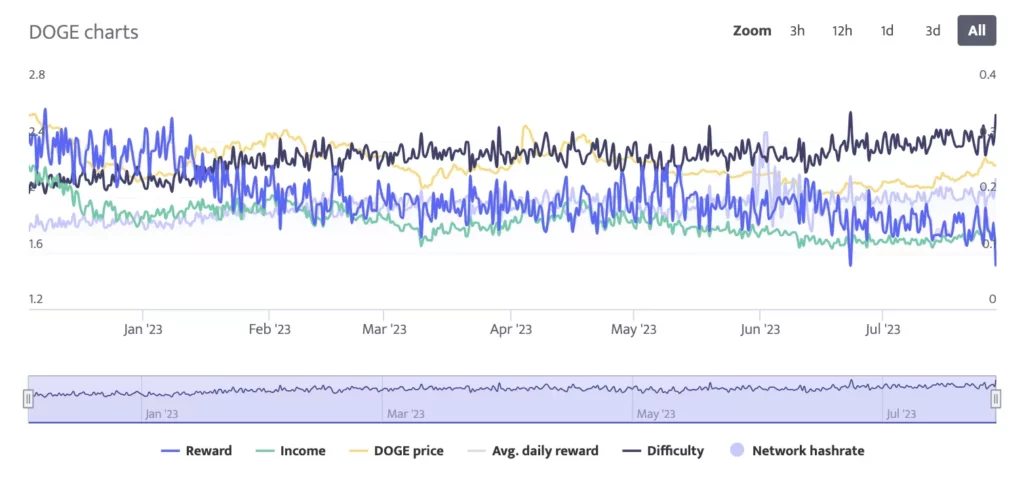
Monero (XMR)
Monero is a privacy-focused cryptocurrency that prioritizes anonymity and untraceability in transactions. Launched in 2014, Monero uses the CryptoNote protocol, which enhances privacy by employing ring signatures, confidential transactions, and stealth addresses.
Ring signatures mix a user’s transaction with several others, making it challenging to trace the sender. Confidential transactions obfuscate the transaction amount, and stealth addresses hide the recipient’s address, adding layers of privacy to Monero’s blockchain.
Monero’s commitment to privacy has made it a preferred choice for users seeking enhanced fungibility and confidentiality in their financial transactions. It employs a proof-of-work (PoW) consensus mechanism and maintains a dynamic block size to accommodate increased network usage.
Some data about Monero:
Algorithm: RandomX
Hardware: GPU
Volume : $102.55M (08/2023)
Founded: 2014
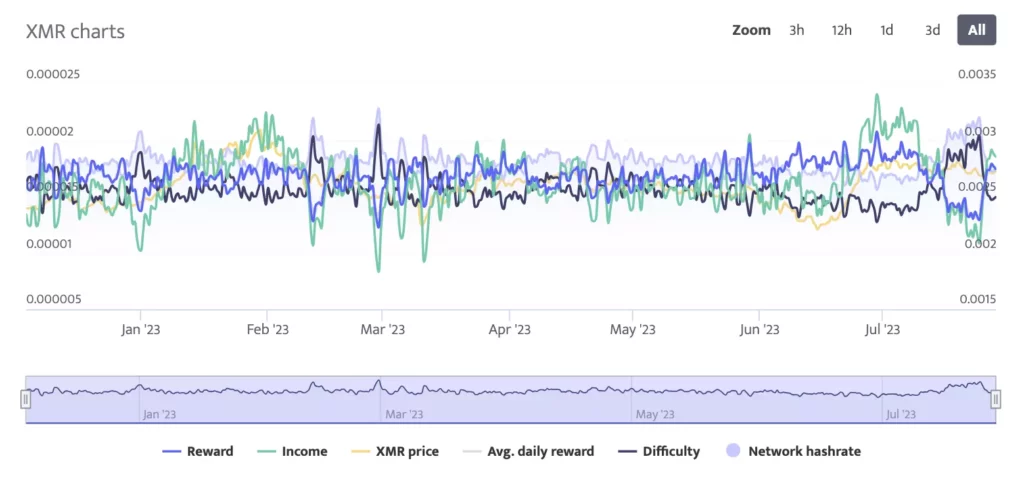
Crypto mining software
A good crypto mining software ensures optimal performance of your mining hardware. The software acts as the bridge between your hardware and the blockchain network, orchestrating all the necessary computations. By using efficient and well-optimized software, miners can maximize their hash rates, leading to a higher probability of solving complex cryptographic puzzles and securing more rewards.
A top-notch mining software offers an intuitive and user-friendly interface, making the mining process more accessible to both beginners and experienced miners. With clear and straightforward controls, you can easily configure your mining settings and monitor your performance in real-time. This ease of use saves time and effort, enabling you to focus on mining without getting bogged down in technical complexities. Reliable mining software ensures stability, preventing frequent crashes or interruptions in your mining operations. By using trusted software, you can maintain a steady mining workflow, ultimately leading to better results.
For the best mining experience, we recommend using our mining software : Pickminer. This will give you real stability and maximize your performance, while remaining easy to use (only for Ravencoin, Neoxa & Firo for the moment).
For more crypto mining software, we recommend to check our many guides on the subject.
Conclusion
In conclusion, mining altcoins in 2023 offer cryptocurrency miners a rich landscape of opportunities beyond the confines of Bitcoin. These alternative digital currencies have unique characteristics, purposes, and technologies, making them an enticing option for investors and enthusiasts. By diversifying their portfolios with altcoins, miners can mitigate risk and capitalize on the potential for exponential growth in emerging projects.
However, it’s essential to approach altcoin investments with caution. The crypto market can be highly volatile, and not all altcoins will succeed in the long run. Thorough research and due diligence are crucial before investing in any altcoin. As the crypto space continues to evolve, altcoins will likely play a pivotal role in shaping the future of decentralized finance and digital economies.
Some of these altcoins are available at Cruxpool, and you can start mining them right now.
Happy mining!